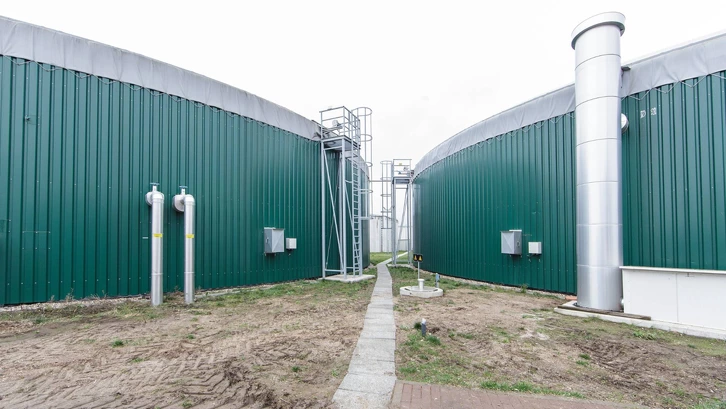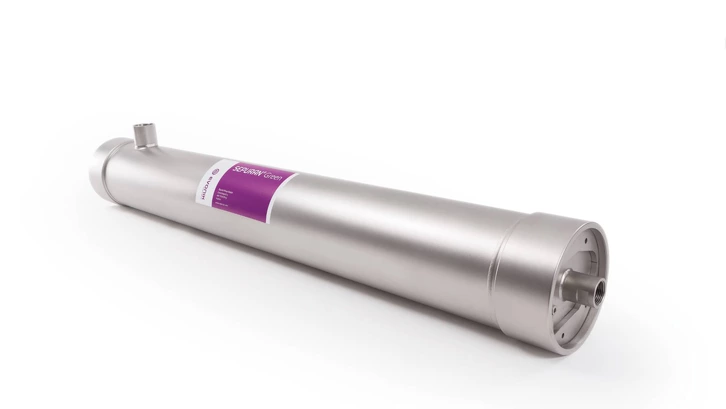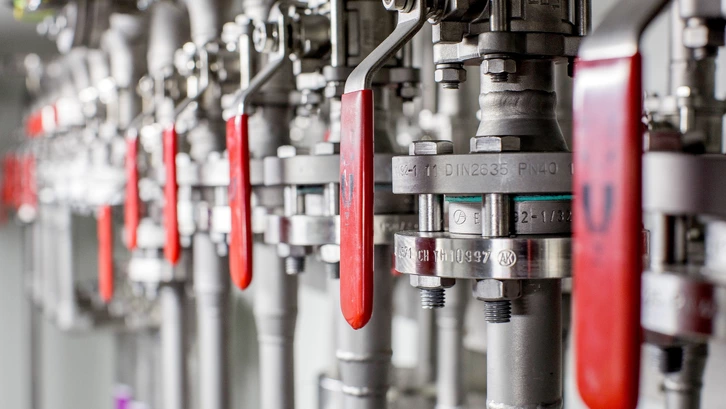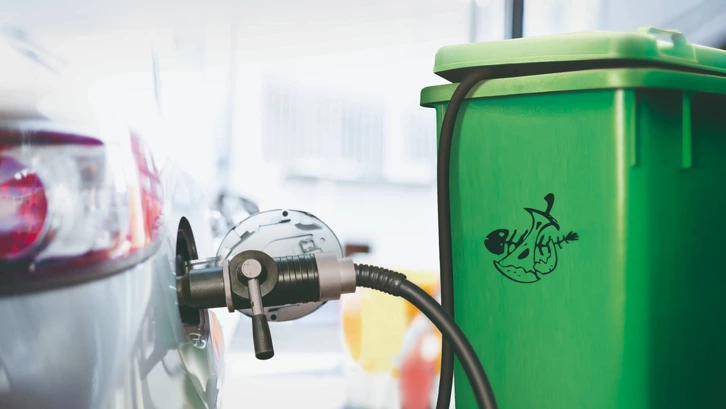
Sustainable energy sources
Renewable natural gas (biogas/CBG) to make India's energy sector independent
Renewable energy is increasingly becoming an important constituent of ‘socio-environmental’ progress and economic growth in India as well as all around the world. Within the broader renewable's discussion, biogas has emerged as a promising energy source globally. This is not only because it is an environmentally sustainable solution, but because of the crucial role it has played to help nations transition to a circular economy.
India for more sustainability in the energy supply
Petrol and diesel prices in India are at all-time highs largely due to increasing crude oil prices. The government certainly has an eye on this key commodity crucial for economic growth and one can expect appropriate policy action to help mitigate the impact of higher fuel prices at least in the near term. In the longer term, the government has been working towards a more sustainable solution for energy security by introducing several initiatives to lower India’s import dependency. This will allow India to become ‘Aatmanirbhar’ in its energy generation.
Renewable energy is increasingly becoming an important constituent of ‘socio-environmental’ progress and economic growth. A third of global power capacity is now based on renewable energy, according to the ‘Annual Renewable Capacity Statistics 2020’ published by the International Renewable Energy Agency (IRENA).
Within the broader renewables discussion, biogas has emerged as a promising energy source globally. This is not only because it is an environmentally sustainable solution, but because of the crucial role it has played to help nations transition to a circular economy.
To promote a circular economy between municipal solid waste and industrial/agriculture waste management systems, sustainable biogas systems can play a significant role. Waste management, especially organic, poses a severe challenge to nations. Methane (greenhouse gas - GHG) emissions are now already a major threat owing to the harmful effects of GHG.
Governments across the world are today waking up to the possibility of harnessing compressed biogas (CBG), an yet unmapped but potentially a vast renewable energy source. CBG, otherwise also known as biomethane globally, is an enriched form of biogas containing more than 90% methane.
SATAT - 5,000 of new compressed biogas plants by 2023-24
India, among other countries, has been promoting ‘Waste-to-Energy’ projects using bio-methanation since 1982. More recently, CBG became a valuable component of India’s future green mixture, outlined in the Government of India’s 2018 ‘Sustainable Alternative towards Affordable Transportation’, or SATAT, scheme. The government, under the SATAT scheme, envisages setting up 5,000 CBG plants by 2023-24 with a production target of 15 MMT. This is expected to create both greener fuels and new employment opportunities in rural belts.
Letters of Intent (LoI) for more than 900 CBG plants have already been given by the Ministry of Petroleum & Natural Gas. The ministry has also signed a Memorandum of Understanding (MoU) with leading oil & gas companies, as well as technology providers to establish Compressed Biogas (CBG) plants under this initiative. The initiative is in line with the goals of ‘Aatmanirbhar Bharat’, ‘Swachh Bharat Mission’ and the national priority to boost the MSME sector.
The government’s seriousness it appears has had a positive rub off on industry. As if on cue, oil and gas marketing companies have also been quick to realise the benefits of CBG. In 2019, oil marketing companies (OMCs) had invited expressions of interest (EOIs) from various gas manufacturers and potential entrepreneurs to promote the use of biofuels such as CBG.
The EOIs were invited from entrepreneurs willing to set up CBG plants and offer them to the OMCs for marketing through their retail outlets. OMCs are sweetening the deal further by assuring entrepreneurs planning to set up CBG plants that they would purchase CBG for the next 10 years. It is expected that petrol pumps would be able to purchase CBG at Rs 46 plus GST. The biggest advantage of CBG is that it benefits the environment, while the waste is being utilised gainfully.
There will be multiplier effects of CBG on several key sectors including waste management, reduction in carbon emissions, while it would create additional revenue sources for farmers by creating a waste to wealth opportunity. It will also give a boost to entrepreneurship and the rural economy by generating employment opportunities.
Promoting CBG in the transport sector will also strengthen the Indian economy against the shocks of fluctuating crude oil and gas prices. If significant potential of CBG is exploited in the country, India can make significant dent on LNG imports, can supplement to the local production of gas.
CBG and its by-products hold the chance for a circular economic growth.
Compressed biogas (CBG) - Renewable energy source for sustainable transportation

Biogas has emerged as a promising energy source globally not only because it is an environmentally sustainable solution, but because of the crucial role it has played to help nations transition to a circular economy. To promote circular economy between municipal solid waste and industrial/agriculture waste management systems, Sustainable biogas systems can play a significant role. Waste management, especially organic, poses a severe challenge to nations. Methane (greenhouse gas - GHG) emissions are now posing a major challenge owing to the harmful effects of GHG. Governments across the world have realized the potential of harnessing this as a renewable energy source. Compressed Biogas (CBG) is an enriched form of biogas containing more than 90% methane.
Biogas is produced by fermentation of biomass, an organic substance consisting of, for example, plants, liquid manure, or effluent sludge. But in addition to the methane energy source, raw biogas also contains carbon dioxide (CO2) and other trace gases. Because CO2 is not combustible, it lowers the calorific value of the gas and must therefore be separated out.
The common separation methods such as pressurized water scrubbing, pressure swing adsorption, and amine scrubbing have considerable disadvantages: They need comparatively large amounts of energy as well as auxiliary materials and chemicals. Wastes and wastewater are generated that must be treated and disposed of. Further, the biogas after upgrading is usually at low pressure. Before it is fed into a medium-pressure grid, it needs to be compressed to 15-20 bar by, for example, an additional compressor. Conventional upgrading plants are therefore usually cost effective only for raw biogas quantities significantly in excess of 500 standard cubic meters per hour (Nm³/h). This usually makes them unsuitable for decentralized energy supply with a large number of relatively small plants.
Evonik Industries has developed a technology for cost- and energy-efficient separation of CO2. What appears at first sight to be a bunch of spaghetti strands or a paint brush is in fact a bundle of highly selective membranes made up of multiple cylindrical polymer hollow fibres. These are used in the new hollow fibre membrane modules of SEPURAN® Green.
Efficient biogas upgrading




Biogas production - an efficient and developed technology
A patented 3 stage membrane-based gas separation process technology, significantly increases the recovery of biomethane, which has a corresponding effect on the profitability of biogas processing plants, hence making the upgrading process as efficient and economical as possible. Consequently, this type of biogas upgrading technology helps conserve resources and protect the environment as it requires comparatively little energy and does not need any auxiliary materials or chemicals. No waste or wastewater is produced that would otherwise have to be treated and disposed of.
Biogas production is an efficient and developed technology. Commercial use of Biogas can be amplified or increased significantly provided biogas is upgraded on-site before shipping or before being injected in city-wide grids. While cost plays a key role in shortlisting of technologies for biogas purification, it is also important that the various OEM’s and technology providers remain mindful of employing technologies that are Sustainable and GREEN, to render biogas as a truly sustainable energy source in the world.
If one considers developments in countries where biomethane production is being embraced on a large scale, two factors have played major role in its development: Strong policy support, and Technology innovation. While Indian policy makers have given a positive thrust to this market to gain significant interest from investors and entrepreneurs, it is technology innovation that will be crucial for the next phase of growth, giving this sector the much-needed push to move towards large-scale biogas plant set-ups in India. This is where global players with advanced solutions could play an integral role to spur India’s own efforts to achieve self-reliance in biogas-led energy.



